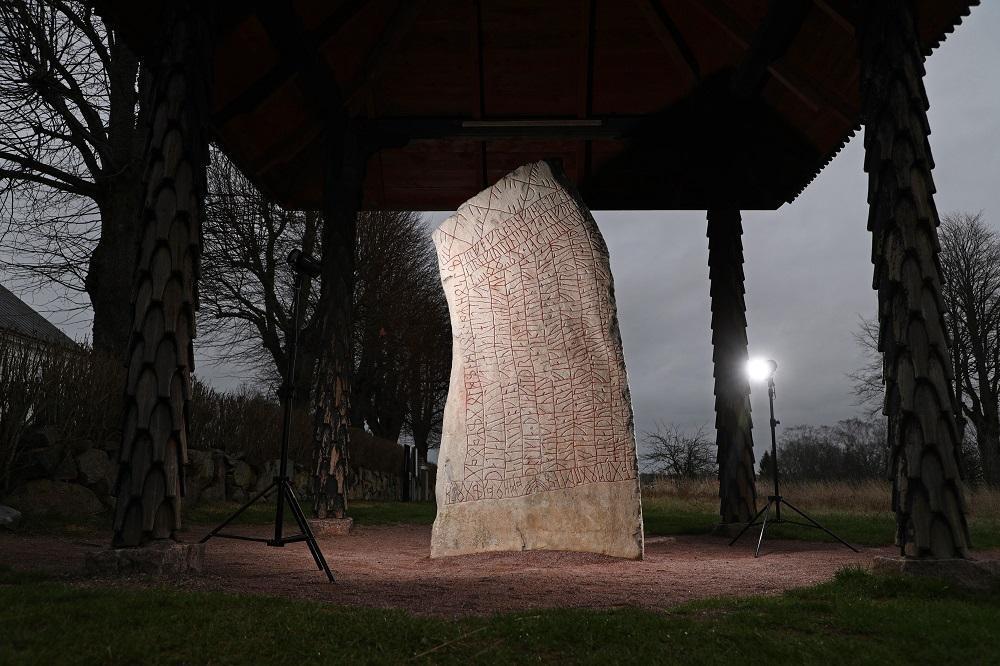
One of the world's most famous runestones is now believed to have been erected by Vikings fearing a repeat of a previous cold climate crisis in Scandinavia, according to a new study.
The Rok stone, located near Lake Vattern in central Sweden, carries what is believed to be the longest known runic inscription in the world. It consists of more than 700 runes, the letters of old Germanic language alphabets.
It is believed to have been erected as a memorial to a dead son, but the exact meaning of the text has remained elusive, as parts are missing and it contains different writing forms.
The stone refers to the heroic acts of "Theodoric," which some scholars believe refers to Theodoric the Great, a sixth century ruler of the Ostrogoths in what is now Italy.
Researchers have long thought the 5-ton, roughly 2.5-meter (8-feet) tall Rok stone was raised as a memorial to a dead son and the writing on it related heroic tales of Viking kings and the battles they fought.
Four academics at three Swedish universities now suspect the inscriptions are more of an allusion to an impending period of extreme winter, as the person who erected the stone tried to put their child's death into a larger perspective.
"The inscription deals with an anxiety triggered by a son's death and the fear of a new climate crisis similar to the catastrophic one after 536 CE," the authors wrote.
The sixth-century crisis is believed to have been caused by a series of volcanic eruptions which dramatically influenced climate with lower average temperatures, ruined crops and ensuing hunger and mass extinctions.
"We believe it talks about a cosmic balance," University of Goteburg Professor Per Holmberg, who led the study, said.
"Maybe we've focused too much on the importance of military power, but maybe the religious power to keep the cosmos together was more important." Holmberg added.
A reference on the stone to the "death of the sun nine generations ago" could refer to the extreme climate cooling in the years 535-536 that caused worldwide crop failures and famine.
It has been estimated that as a result the population of the Scandinavian peninsula decreased by at least 50 percent, and the researchers point out that the memory of those events may have been passed down and even influenced the mythology.
"The powerful elite of the Viking Age saw themselves as guarantors for good harvests," Olof Sundqvist, a professor of religious history at Stockholm University, said. "They were the leaders of the cult that held together the fragile balance between light and darkness."
The new interpretation is based on a collaborative approach between researchers from several disciplines, including philology, archaeology and the history of religion.
Passages from the stone suggest the text refers to battles over a hundred years.
But the researchers suggest it could be speaking of a different kind of battle: "The conflict between light and darkness, warmth and cold, life and death."
They also take into account a number of events in the author of the text's lifetime, which could "have seemed extremely ominous."
"A powerful solar storm coloured the sky in dramatic shades of red, crop yields suffered from an extremely cold summer, and later a solar eclipse occurred just after sunrise," said Bo Graslund, professor in archaeology at Uppsala University.
"Even one of these events would have been enough to raise fears of another Fimbulwinter," Graslund added referring to a winter lasting three years in Norse mythology, a sign of the coming of Ragnarok.